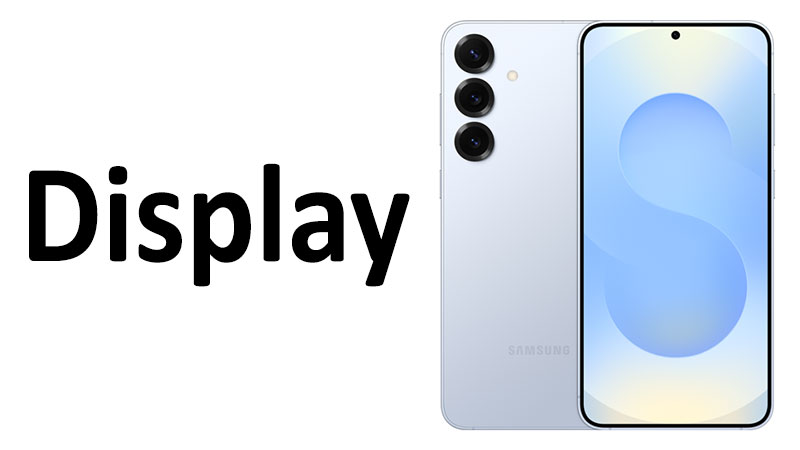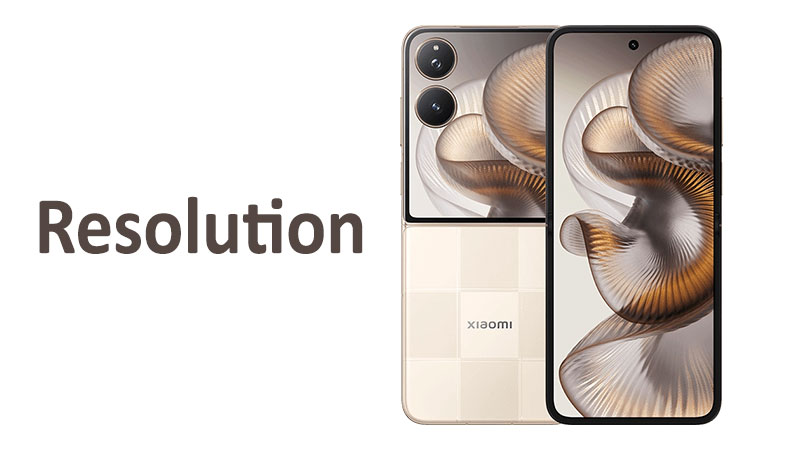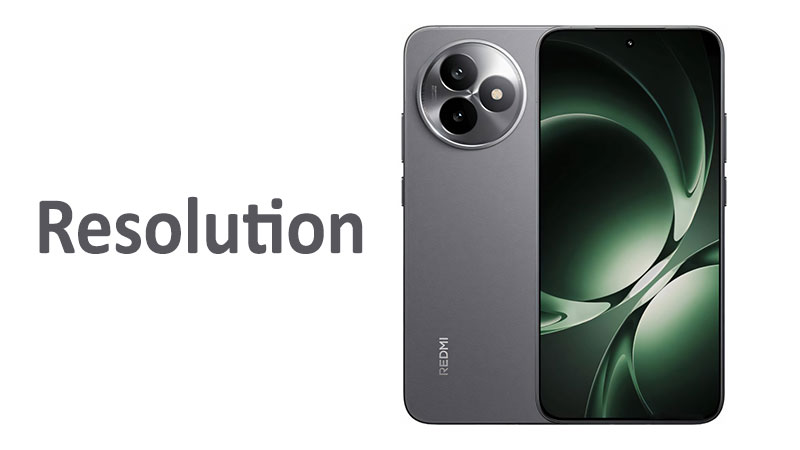The Samsung Galaxy S25 FE display is a critical component that defines the user experience. As the Fan Edition (FE) model, the S25 FE must strike a near-perfect balance. It needs to offer flagship-level visual quality at a more accessible price point. This large, vibrant screen is the primary window to all mobile interactions. Its specifications, including the panel type, size, and advanced features, determine how content looks and feels. A detailed understanding of the S25 FE’s display technology is essential for any potential buyer. This comprehensive review will dissect the screen’s technical specs. We will analyze its performance, compare it with key rivals, and help you gauge its overall quality.
Technical Specifications of the S25 FE Display
Samsung built the Galaxy S25 FE display using a blend of premium and cost-effective specifications. This strategic mix allows it to deliver a top-tier visual experience. It still manages to keep the phone’s price competitive. The screen is large, fast, and protected by robust glass.
Dynamic LTPO AMOLED 2X Panel
The S25 FE features a Dynamic LTPO AMOLED 2X panel. This is Samsung’s flagship display technology. AMOLED technology is inherently superior to standard LCDs. AMOLED means Active-Matrix Organic Light-Emitting Diode. Every pixel generates its own light. This allows for perfect blacks and infinite contrast ratios.
The “Dynamic” designation refers to its color accuracy and brightness capabilities. The “2X” signifies the high refresh rate capability. LTPO is the most significant upgrade here. LTPO stands for Low-Temperature Polycrystalline Oxide. This technology allows the display to dynamically adjust its refresh rate. It ranges from 1Hz up to 120Hz. This dynamic shifting dramatically improves battery efficiency. The screen slows down for static images. It speeds up for scrolling and gaming.
Screen Size and Body Ratio
The S25 FE features a large 6.7-inch display. This size provides a spacious canvas for content consumption and multitasking. A 6.7-inch screen is ideal for media enthusiasts and mobile gamers. It allows for an immersive viewing experience.
The display boasts an impressive screen-to-body ratio of approximately 89.2%. The screen uses 110.2 cm² of the phone’s front surface. This high ratio indicates minimal bezels. The result is a more modern and aesthetic design. Users get more screen space without significantly increasing the phone’s physical size.
Resolution and Pixel Density
The Samsung Galaxy S25 FE display offers a resolution of 1080 x 2340 pixels. This is commonly referred to as Full HD+ resolution. It results in a 19.5:9 aspect ratio.
This resolution provides a pixel density of approximately 385 pixels per inch (ppi). A density of 385 ppi is considered excellent for a smartphone screen. It produces sharp text and detailed images. The human eye generally cannot discern individual pixels at this density. Samsung made a deliberate choice here. They opted for Full HD+ instead of the higher Quad HD+ found in the flagship Ultra models. This choice helps conserve battery life without sacrificing significant perceived clarity.
Performance Review: Refresh Rate, Brightness, and Color
The true quality of a display goes beyond its static resolution. It depends on its responsiveness, brightness, and color reproduction capabilities. The S25 FE display excels in these dynamic areas.
The Power of the 120Hz Adaptive Refresh Rate
The S25 FE’s 120Hz refresh rate is a key selling point. A standard screen refreshes 60 times per second (60Hz). This screen refreshes 120 times per second. This speed makes motion look incredibly smooth. It significantly enhances the user experience.
Scrolling through web pages and menus appears buttery smooth. Mobile gaming benefits greatly from the reduced motion blur. The LTPO technology makes this feature practical. The display automatically drops the refresh rate to save power when appropriate. For example, it might drop to 10Hz when viewing a static photo. It will jump back to 120Hz when you start scrolling. This adaptive control manages the phone’s battery effectively.
Peak Brightness and Outdoor Usability
The S25 FE boasts a peak brightness of 1900 nits. This is an exceptional brightness level for a smartphone. Nits measure the amount of light the screen emits. High brightness is crucial for comfortable outdoor use.
With 1900 nits, the screen remains perfectly legible even under direct midday sunlight. This eliminates the squinting and shading required with dim screens. Moreover, this high peak brightness is vital for rendering HDR10+ content. High Dynamic Range (HDR) content uses these high brightness peaks for stunning contrast. The screen delivers brilliant highlights in compatible movies and videos.
HDR10+ and Color Accuracy
The display supports HDR10+ certification. This is an industry standard for high-quality video content. HDR10+ allows the screen to display a much wider range of colors and luminosity. Colors look more vibrant, and gradients are smoother. This significantly enhances the viewing experience for streaming services like Netflix and Amazon Prime Video.
Samsung displays are renowned for their exceptional color accuracy. The S25 FE lives up to this reputation. It offers vivid colors that pop, characteristic of AMOLED technology. Users can also select between different screen modes. These modes allow them to tune the color palette from hyper-vivid to a more natural, calibrated tone.
Protection and Durability
A high-quality display requires robust protection. The S25 FE integrates a strong layer of protective glass. This glass safeguards the screen from everyday wear and tear.
Corning Gorilla Glass Victus+
The S25 FE uses Corning Gorilla Glass Victus+ for screen protection. Victus+ is a premium material known for its excellent durability. It offers superior resistance to scratches and cracks compared to earlier Gorilla Glass versions.
This protection is essential for maintaining the phone’s aesthetic and functional lifespan. It resists scratches from keys and coins in pockets and bags. Victus+ also offers enhanced drop performance. This means the screen has a better chance of surviving accidental falls. It provides peace of mind for the user.
Mohs Level 5 Hardness
The screen’s scratch resistance is often measured on the Mohs scale of mineral hardness. The S25 FE screen exhibits resistance up to Mohs level 5. This indicates a high degree of hardness. A Mohs level of 5 means that everyday objects like metal tools or sharp sand would typically struggle to scratch the glass. However, sand or other materials containing minerals above level 5, such as quartz, can still cause damage. The Victus+ glass provides excellent daily scratch resistance, but users should still consider a screen protector for ultimate defense.
Specialized Comparisons and Market Placement
The S25 FE needs to compete fiercely in the high-end mid-range market. Comparing its display against its direct predecessor and key rivals helps define its value proposition.
S25 FE vs. Samsung Galaxy S24 FE Display
The S25 FE display represents a significant and necessary upgrade over its predecessor. The most critical change is the introduction of LTPO technology. The Galaxy S24 FE typically featured a standard Dynamic AMOLED panel. This older panel often offered a non-adaptive 120Hz or a fixed 60Hz setting.
The S25 FE’s dynamic LTPO is a game-changer. It delivers the same smooth 120Hz experience while substantially improving battery life. This optimization elevates the S25 FE closer to the current flagship S-series phones. The peak brightness is also often higher in the S25 FE. This results in better outdoor visibility and superior HDR performance. This generation’s display update is functional and highly valuable.
S25 FE vs. Flagship Competitors (e.g., iPhone Pro or Google Pixel)
The S25 FE competes well against the displays of premium flagships. Samsung’s display technology is arguably the best in the industry. The S25 FE’s 1900 nits peak brightness and 120Hz LTPO panel are features often reserved for the most expensive phones.
The primary difference lies in resolution. Competitors often use a higher Quad HD+ (QHD+) resolution. The S25 FE uses Full HD+ (FHD+). While QHD+ offers slightly sharper details, the difference is negligible for most people. The QHD+ resolution also consumes more power. Therefore, the S25 FE strikes a pragmatic balance. It offers near-flagship performance in brightness and refresh rate while using a lower-resolution panel for better battery efficiency. This makes it an excellent value proposition.
Pros, Cons, and Buyer’s Checklist
The S25 FE display has a strong set of features that make it highly competitive. However, every design choice involves some trade-offs.
Advantages (Pros) of the S25 FE Display
The screen offers several key benefits for users across different needs.
- Dynamic LTPO Technology: It provides excellent power efficiency by automatically adjusting the refresh rate.
- Superb Smoothness: The 120Hz refresh rate delivers an incredibly fluid scrolling and gaming experience.
- High Peak Brightness: 1900 nits ensures perfect visibility even under bright sunlight.
- Excellent Contrast: The AMOLED panel offers true blacks and an infinite contrast ratio, ideal for movie viewing.
- Robust Protection: Corning Gorilla Glass Victus+ provides strong defense against scratches and drops.
Disadvantages (Cons) of the S25 FE Display
The compromises Samsung made are few, but they are important for specific users.
- FHD+ Resolution: The resolution is lower than the QHD+ used in the highest-tier flagships. Extreme pixel peepers may notice a minor difference.
- Potential PWM Flickering: AMOLED panels use Pulse Width Modulation (PWM) for dimming. Some sensitive individuals might perceive flickering at low brightness levels.
- Battery Drain at Full 120Hz: Although LTPO helps, the screen still draws significant power when constantly running at its maximum 120Hz rate for gaming.
Essential Checklist for Buyers
Before purchasing the Galaxy S25 FE, consider these practical points regarding the screen.
- Prioritize Smoothness: If you value fluid scrolling, web browsing, and competitive gaming, the 120Hz LTPO panel is a major draw.
- Assess Outdoor Use: If you frequently use your phone outdoors or travel often, the 1900 nits peak brightness makes the S25 FE an excellent choice.
- Screen Protector: Despite the Victus+ glass, you should apply a screen protector. This adds an extra layer of defense against abrasive micro-scratches from dust and sand.
- Understand the Resolution: The FHD+ resolution is nearly imperceptible in daily use. Do not avoid the phone based on this specification alone. The battery savings are a worthy trade-off.
Conclusion
The Samsung Galaxy S25 FE display is arguably the phone’s most compelling feature. It leverages Samsung’s proprietary display technology to deliver a spectacular visual experience. The inclusion of the Dynamic LTPO AMOLED 2X panel is a major highlight. It pairs the desired 120Hz refresh rate with crucial, battery-saving adaptive technology.
The 6.7-inch size is perfect for media consumption. The high 1900 nits peak brightness ensures exceptional clarity outdoors and stunning HDR performance. While the resolution remains at Full HD+, the resulting pixel density of 385 ppi is more than sufficient for clear, crisp visuals. The use of Gorilla Glass Victus+ provides necessary physical durability. The S25 FE’s screen offers a clear path to flagship display performance without the flagship price tag. It is a fantastic screen that makes the S25 FE a strong contender in its class.
FAQ
Does the Samsung Galaxy S25 FE have an adaptive refresh rate?
Yes, the S25 FE uses LTPO technology. This allows the display to adapt its refresh rate dynamically between 1Hz and 120Hz for better efficiency.
What is the peak brightness of the S25 FE screen?
The display can reach a very high peak brightness of 1900 nits. This makes the screen highly visible outdoors in direct sunlight.
What type of display protection does the S25 FE use?
The Samsung Galaxy S25 FE display is protected by Corning Gorilla Glass Victus+. This glass offers excellent resistance against scratches and accidental drops.
Is the S25 FE resolution Quad HD+?
No. The S25 FE uses a Full HD+ resolution of 1080 x 2340 pixels. This resolution offers a balance between sharpness and battery efficiency.
What does the “AMOLED” term mean for the display quality?
AMOLED means each pixel is self-illuminating. This allows the S25 FE to produce perfect black levels and an infinite contrast ratio.



